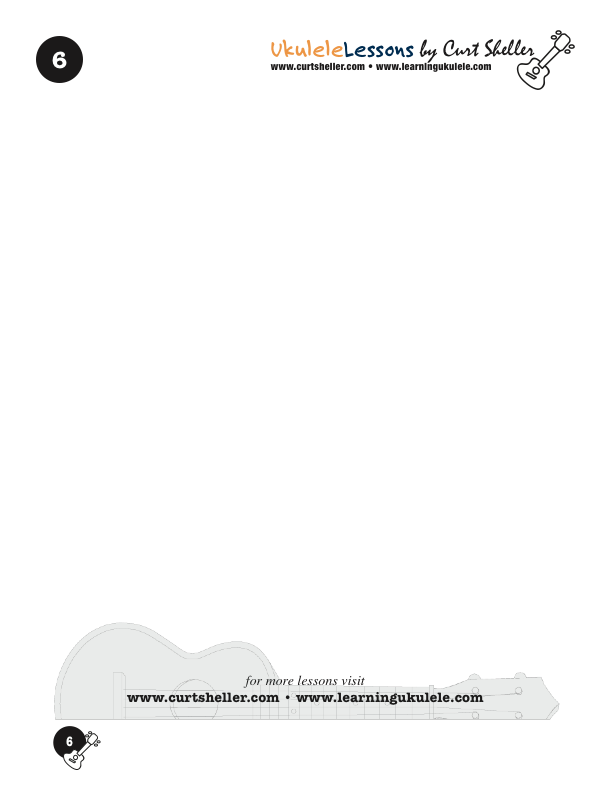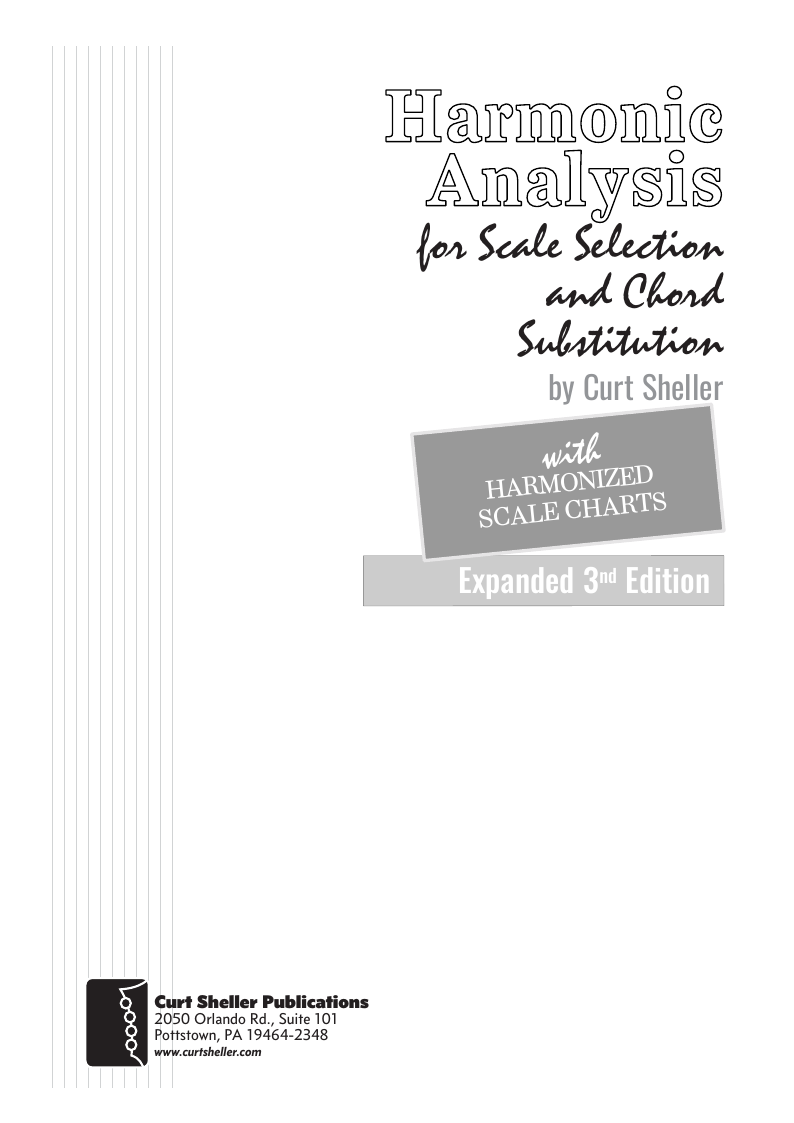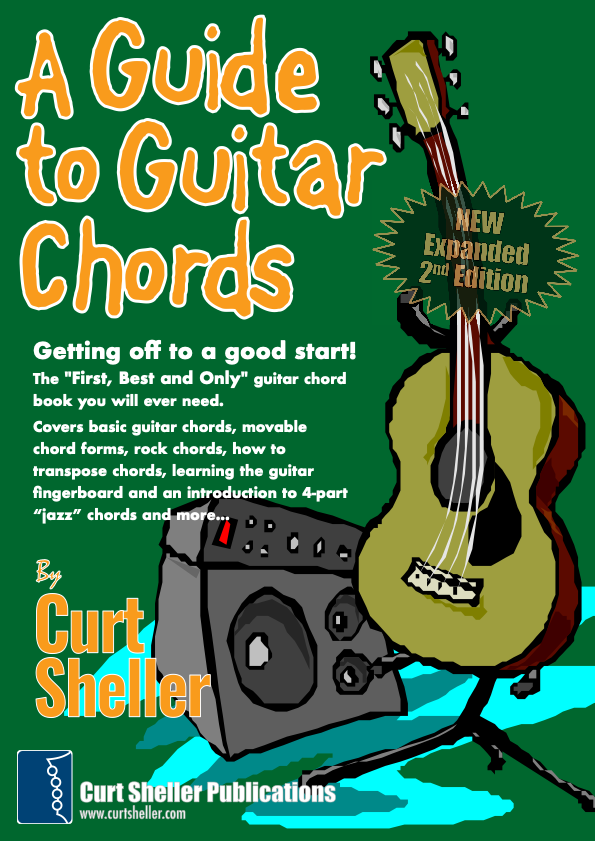Three-chord tunes, though, are more common, since a melody may then dwell on any note of the scale. Often the chords may be selected to fit a pre-conceived melody, but just as often it is the progression itself that gives rise to the melody.












Three-chord tunes, though, are more common, since a melody may then dwell on any note of the scale. Often the chords may be selected to fit a pre-conceived melody, but just as often it is the progression itself that gives rise to the melody.
Available for Premium Site Access Plans Only
The three-chord I — IV — V progression, a particularly popular kind of circle progression, can be placed into a four-bar phrase in several ways that have been put to endless use in popular music. Using the Nashville Numbering System, there are represented as 1 4 5.
- I – IV – V – V ( examples in C: C F G G )
- I – I – IV – V ( C C F G )
- I – V – IV – V ( C G F G )
- I – IV – I – V ( C F C G )
- I – IV – V – IV ( C F G F )
The twelve bar blues and its many variants use an elongated, three-line form of the I – IV – V progression that has also generated countless hit records, including the most significant output of rock and rollers such as Chuck Berry and Little Richard. In its most elementary form (there are many variants) the chords progress as follows:
- I – I – I – I
- IV – IV – I – I
- V – IV – I – I
(wikiwand); Three Chord Progressions
Three-chord tunes, though, are more common, since a melody may then dwell on any note of the scale. Often the chords may be selected to fit a pre-conceived melody, but just as often it is the progression itself that gives rise to the melody.
Available for Premium Site Access Plans Only
The three-chord I — IV — V progression, a particularly popular kind of circle progression, can be placed into a four-bar phrase in several ways that have been put to endless use in popular music. Using the Nashville Numbering System, there are represented as 1 4 5.
- I – IV – V – V ( examples in C: C F G G )
- I – I – IV – V ( C C F G )
- I – V – IV – V ( C G F G )
- I – IV – I – V ( C F C G )
- I – IV – V – IV ( C F G F )
The twelve bar blues and its many variants use an elongated, three-line form of the I – IV – V progression that has also generated countless hit records, including the most significant output of rock and rollers such as Chuck Berry and Little Richard. In its most elementary form (there are many variants) the chords progress as follows:
- I – I – I – I
- IV – IV – I – I
- V – IV – I – I
(wikiwand); Three Chord Progressions
Three Chord Progressions
Songs
There are too many songs to list that only have three chords. Go to any music store and there will be books actually titles Three Chord Songs. but here are a few
- All Shook Up
- Amazing Grace
- Away In a Manger
- Battle Hymn of the Republic
- Billy Boy
- Blowin’ In the Wind
- Blue Suede Shoes
- Bye, Bye, Love
- Camptown Races
- Chantilly Lace
- Don’t Be Cruel
- Down By the Riverside
- For He’s a Jolly Good Fellow
- Frankie and Johnny
- Goodnight, Ladies
- Hang On Sloopy
- Hail, Hail, the Gang’s All Here
- He’s Got the Whole World
- How Much Is That Doggie...
- Hound Dog
- Jambalaya
- La Cucaracha
- London Bridge
- Marianne
- Mary Had a Little Lamb
- Mexican Hat Dance
- Row, Row, Row Your Boat
- Skip to My Lou
- Three Blind Mice
- Tom Dooley
iRealPro Practice Progressions
Here are a few common harmonic cells, i.e., the chords that show up in basic songs.
You'll find that there a lot of common chord sequences that make of the songs that we all like and have heard many, many times over and over, over the years,
- I (Example in C Major: C)
- I IV (Example in C Major: C F)
- I V (Example in C Major: C G)
- I V7 (Example in C Major: C G7)
- I IV I V (Example in C Major: C F C G)
- I IV I V7 (Example in C Major: C F C G7)
Use iRealPro and several different styles and transpose. What sound good in one style might not sound good in another style.
iReal Pro - Practice Made Perfect • The essential instrument for every musician. Master your art by practicing with the world's most versatile virtual band, tirelessly accompanying you in any style, tempo or key. With thousands of chord charts in your pocket, you'll always be prepared for the next jam session.
Available for iPhone, iPad, Mac, and Android.
NOTE: - I (Curt, LearningUkulele.com, Learning Ukulele with Curt) Have been using iReal Pro , bought and paid for on several platforms ever since it first came on to music scene. It is a great tool and one I use with all students as well in my daily, personal practice sessions. iReal Pro was made by a very small team of passionate people led by Massimo Biolcati, a jazz musician in NYC who taught himself to code for his first iPhone so that he could build his dream app.
Related Lessons, Videos, Lesson Series, Songs, Books & Reference Charts, Resources & Assets, Workshops are below.

Harmonic Analysis ( HA ) is the process used to determine the harmonic function of chords within a chord progression. A chord progression is defined as a sequence of chords, each chord has a root and has a particular chord type. The relationship of a chord's root to a scale determines its function within that scale's tonality. Once a chord's function is identified, scale selections along with chord and scale substitutions can be made. This process is called Root Movement Analysis ( RMA ). This series of lessons are extracted from my book for use with individual private and on-line students. Each lesson directly corresponds the chapters in my book Harmonic Analysis for Scale Selection and Chord Substitution by Curt Sheller (me).

Listening to songs and wanting to play the same songs on ukulele – that's what draws most people to the ukulele. That and it looks like a load of fun and easy to play – which it is. Then you need to actually remember the songs that you're learning, so you can play them again. And, hopefully, not have to read them off a sheet all the time.

The "Major Scale" or Ionian scale is a diatonic scale, made up of seven distinct notes, plus an eighth which duplicates the first one octave higher. In solfege these notes correspond to the syllables Do, Re, Mi, Fa, Sol, La, Ti/Si, (Do), the Do in the parenthesis at the end being the octave of the root.

Harmonic Analysis (HA), also known as the study of chord relationships, is the method used to identify the harmonic role of chords within a chord progression or song. A chord progression refers to a sequence of chords, with each chord having a root note and belonging to a specific chord type. The function of a chord within a particular scale's tonality is determined by its relationship to that scale.

Harmonic Analysis is the understanding of the functional sequence of chords. It is the process used to analyze the harmonic structure of a progression, song or composition. This analysis is then used to make scale selections for improvisation and chord substitution.

Exploring jazz chords using a variety of common chord progressions based on songs from the standard jazz repertoire. Core Chords are the basic set of chords needed to play a wide range of music, in a variety of styles. This set of chords includes basic open position chords, basic movable form chords and the core 4-part "jazz" chords.

Covering basic ukulele chords that ALL uke players MUST know, movable chord forms, rock uke chords, how to transpose chords, learning the ukulele fingerboard and an introduction to 4-part jazz chords and more... FOR LEFTIES - Tunings: C, G, or D Tunings. Low or high string four variations.

Learn a variety of strums and rhythmic patterns in wide range of musical styles. One of the first skills a ukulele player learns is the art and craft of strumming, playing rhythm. This refers to an accompaniment technique suitable for the singer, singer - songwriter or someone who plays a support role for another instrument.

Modular Phonetic Rhythm represents a significant advance in the teaching and application of rhythm. Eliminating many inefficient aspects of rhythm education, Modular Phonetic Rhythm streamlines the traditional educational approach, resulting in a reflexive reaction to rhythm.


return in your investment)—it is this— learning the
f*ckingnotes of your OWN instrument. Sorry for the tough talks—but it is sooooo true!


Learn to read single note melodies in the first/open position is a lot easier than you might think. Book: Ukulele – Reading Music Series – Primer

An organized collection of daily practice and reference material for the contemporary ukulele player for developing the vocabulary and knowledge necessary for single note playing. Book: Daily Practice Material for the Contemporary Ukulele
Checkout the Books & Reference Charts for additional Handy, Dandy Reference Charts.

Ukulele Fingerboard Chart for C Tuning, Low or High G – G C E A

Ukulele Fingerboard Chart for G Tuning, Low or High A – D G B E

A handy reference chart of all 15 major and relative minor key signatures. US Letter 8.5 x 11 sized (ANSI-A) , A4







.jpg)